All issues

Volume 32, Issue 7
Displaying 1-9 of 9 articles from this issue
- |<
- <
- 1
- >
- >|
Topical Papers on Atom Optics
Topical Paper
Laser Review
-
Masayoshi WATANABE2004Volume 32Issue 7 Pages 442
Published: July 15, 2004
Released on J-STAGE: January 12, 2010
JOURNAL FREE ACCESSDownload PDF (108K) -
Ryuzo OHMUKAI2004Volume 32Issue 7 Pages 443-449
Published: July 15, 2004
Released on J-STAGE: January 12, 2010
JOURNAL FREE ACCESSRecent progress in manipulating atoms with laser beams has made it possible to fabricate nanostructures using atom optics. This technique is called atom lithography and is expected to overcome the present technical limitations of conventional lithographic methods. This paper reviews the principles behind and some experimental results on atomic beam manipulation and its application for engineering high-performance atom lithography.View full abstractDownload PDF (413K) -
Jun-ichi FUJITA2004Volume 32Issue 7 Pages 450-456
Published: July 15, 2004
Released on J-STAGE: January 12, 2010
JOURNAL FREE ACCESSWe describe various techniques to manipulate laser-cooled Ne atoms interferometrically by using a silicon nitride film with holes and electrode deposition. Laser-cooled Ne atoms pass through a computer-generated through-hole binary hologram and generate an atomic image on a substrate. The hologram can be designed to provide a spherical phase correction, and the reconstructed pattern is focused on the substrate at a finite distance from the hologram. Such holographic manipulation can be extended to gray-scaled reconstruction that is used to deposit relief-like 3D atomic patterns on surfaces. In addition, an atom interacts with electric, magnetic, and optical fields. This provides the holographic atomic-wave manipulation to perform functions that are difficult for a light wave. The Stark shift induced by an external electric field is used to switch and to modify atomic patterns in real time. We also introduce an reflecting type atom holography by using quantum reflection.View full abstractDownload PDF (665K) -
Ken'ichi NAKAGAWA2004Volume 32Issue 7 Pages 457-462
Published: July 15, 2004
Released on J-STAGE: January 12, 2010
JOURNAL FREE ACCESSAn atomic interferometry is an essential tool for the precision measurements and also the quantum information processing. I will review the recent progress in the precision measurements of gravity based on the atomic interferometry and also the micro integrated atomic interferometry for the quantum information processing.View full abstractDownload PDF (332K) -
Yoshiro TAKAHASHI2004Volume 32Issue 7 Pages 463-468
Published: July 15, 2004
Released on J-STAGE: January 12, 2010
JOURNAL FREE ACCESSWe have achieved Bose-Einstein condensation of rubidium (87Rb) and ytterbium (174Yb) atoms by optical trapping method. After collecting the atoms in the magneto-optical trap, we have performed evaporative cooling for the atoms in the optical trap. The Time-Of-Flight signals clearly showed the anisotropic expansion of the atom cloud, which is the evidence of the formation of the condensates. Along with these our works, we review the recent experiments on Bose-Einstein condensation with optical trapping method.View full abstractDownload PDF (362K)
Laser Original
-
Akira KUNIEDA, Hiroshi KUMAGAI, Tetsuaki IWANE, Satoru SHIMIZU, Katsum ...2004Volume 32Issue 7 Pages 469-474
Published: July 15, 2004
Released on J-STAGE: January 12, 2010
JOURNAL FREE ACCESSIn order to manipulate silicon atoms through laser cooling, it is necessary to detune precisely to the resonant frequency of the 33P1→43Po0 transition of silicon atoms at 252.41 nm, 28.8 MHz of the natural linewidth and 35.4 mW/cm2 of the saturation intensity. In this study, we demonstrated the optogalvanic spectroscopy for silicon atoms with two types of nano-second frequency tripled Ti:sapphire lasers.View full abstractDownload PDF (430K)
Regular Paper
Laser Original
-
Feng ZHU, Kazuhiko ISHIKAWA, Toru IBE, Katsuhiko ASADA, Masahiro UEDA2004Volume 32Issue 7 Pages 475-479
Published: July 15, 2004
Released on J-STAGE: January 12, 2010
JOURNAL FREE ACCESSA practical system for measuring a film thickness based on laser interferometry has been constructed using a laminar-like laser and a CCD camera. The system can measure a film thickness at a measuring frequency of 50 Hz, which enables real-time measurement in practical use. The measurable minimum thickness by means of a blue laser having a wavelength of 405 nm was 2.4 μm, and the maximum thickness was 1.2 mm for a film with a refractive index of 1.4. The measurement error of the film thickness due to the spherical aberration of the cylindrical lens was Δh/h = 2% at maximum, where h expresses film thickness and Δh its error amount.View full abstractDownload PDF (291K) -
Impact of UV-B Irradiation on Transverse Distribution of Laser-Induced Fluorescence in Peanut LeavesKen'-ichi FUKUCHI, Kunio TAKAHASHI, Hideki TATSUMOTO2004Volume 32Issue 7 Pages 480-484
Published: July 15, 2004
Released on J-STAGE: January 12, 2010
JOURNAL FREE ACCESSThis work reports the measurement of the transverse distribution of UV laser-induced fluorescence in peanut (Arachis hypogaea L.) leaves by an ISA (Imaging Spectrogram Analysis) system. The ISA system comprised a microscope, an imaging spectrograph, a chilled-CCD camera and image measurement devices. The fluorescence spectra on any line in a section of a leaf were examined in detail. Results reveal that the chlorophyll fluorescence ratio (F740/F685) increased according to the depth from the surface in the control leaf, while it maintained a constant value in the UV-B-exposed leaf. Blue fluorescence (400 nm-500 nm) increased remarkably under UV-B irradiation in the upper epidermis of the leaf. It is thought that this method is useful for examining the growth conditions of plant leaves.View full abstractDownload PDF (384K)
Laser Letter
-
Lalit Bhushan SHARMA2004Volume 32Issue 7 Pages 485-487
Published: July 15, 2004
Released on J-STAGE: January 12, 2010
JOURNAL FREE ACCESSGeneration of 0.5 W of cw orange laser radiation at 590-nm by single-pass frequency doubling of 1180-nm high-power Raman-shifted Yb-doped fiber laser in a 20-mm long periodically poled MgO doped lithium niobate (PP-MgO:LN) crystal with internal frequency doubling efficiency of 3.3% is presented. At the low-power level where the laser linewidth was close to the acceptance bandwidth of the PP-MgO:LN crystal, frequency doubling efficiency of 1.36%/W was obtained.View full abstractDownload PDF (70K)
- |<
- <
- 1
- >
- >|